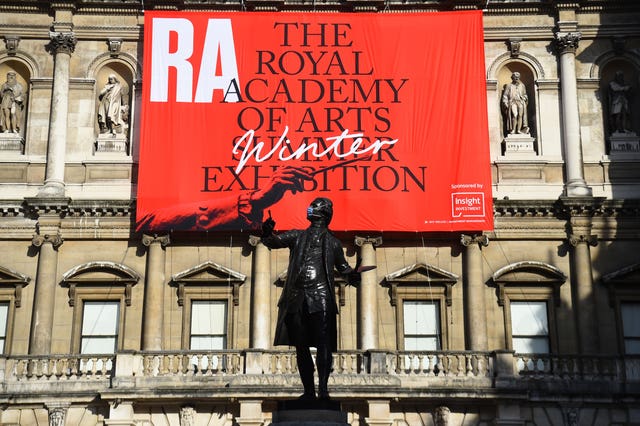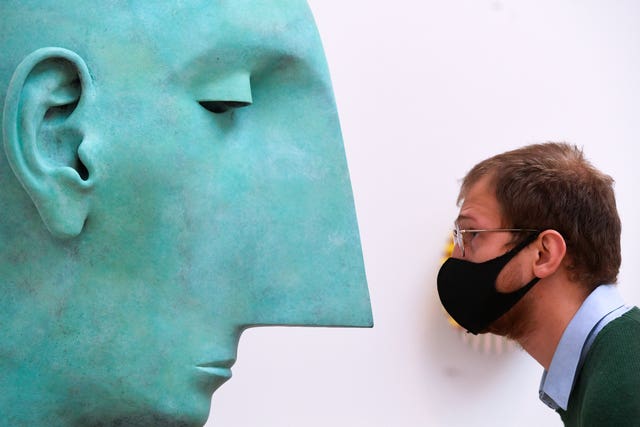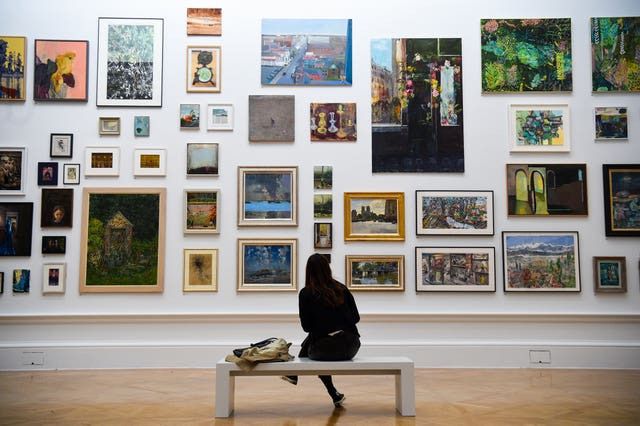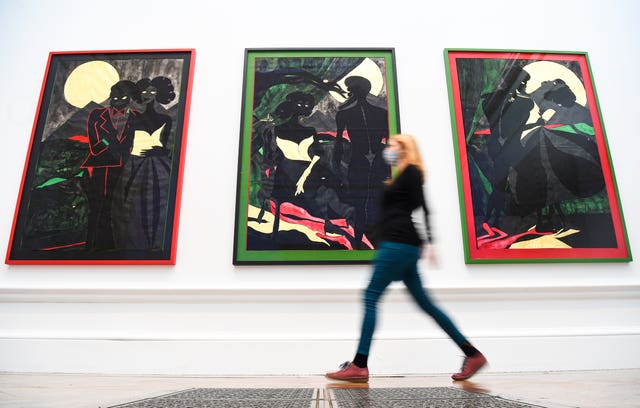Summer Exhibition especially important to artists amid pandemic, says RA curator
This year’s works reflect on climate change, pro-democracy protest and landscape.

The importance of this year’s Summer Exhibition at the Royal Academy has only been increased by the coronavirus pandemic, according to a curator.
The annual event, now on to its 252nd edition, has gone on display, after being delayed to autumn for the first time in its history.
The exhibition has taken place every year without interruption since 1769, even throughout the two world wars.

Edith Devaney said the event was an important outlet for artists “celebrated or emerging” given commercial art fairs did go ahead this summer due to Covid-19.
She told the PA news agency: “When I first started, the art fairs were gaining a really strong foothold and I remember thinking: ‘Where do I bring this now? Are the art fairs going to completely swamp us? Are we becoming irrelevant?’
“It was something I had to think about long and hard and, of course, what has been interesting this year is that they just haven’t happened, so I felt even more conviction this year, that the Summer Exhibition is such an important event for practicing artists, be they celebrated or emerging.
“It puts their work on a particular stage where they can continually attract the attention of new audiences, which is really what it is all about.

“In terms of the commercial side, we have all had a difficult time but artists in particular have had months – more than half a year – or not having their work displayed, apart from online.
“We thought at first that online galleries were completely wonderful and now we have got to this stage of: ‘I just need to stand in front of a real work of art.’
“I think it is incredibly important and it feels celebratory as well.”
Devaney said the team behind the exhibition had feared the event might not take place.

She added: “When I reflect back to the moment in March of that realisation that it wasn’t going to happen in June, and there was a risk of this being the first Summer Exhibition in our illustrious 252-year history that just didn’t take place.
“But very quickly, there was such a small group of us because so many people were furloughed.
“It was me and some colleagues and the CEO Axel Ruger, just trying to put our programme together, and of course the Summer Exhibition is part of that.”
Turner Prize-nominated siblings Jane and Louise Wilson have co-ordinated the exhibition – the first time it has been curated by an artistic duo.
This year, works reflect on climate change, pro-democracy protest and landscape, in the form of installation, painting, film, photography and sculpture.

Due to the coronavirus pandemic, much of the preparation for this year’s exhibition was done virtually.
Filmmaker and installation artist Isaac Julien curated the first two galleries and his selection of invited artists forms an homage to the late curator and art historian Okwui Enwezor.
Sculptor Richard Deacon has curated the sculpture gallery, while two other Royal Academicians have curated their galleries virtually.
Eileen Cooper is managing prints and Stephen Farthing is working from Jordan curating galleries three and nine.
Devaney said social distancing had meant some of the larger installations in the courtyard and staircase areas were scrapped.
“There were a few casualties along the way for the Summer Exhibition,” she said.
“One was the courtyard display. It was felt the piece we had in mind was a bit of nightmare in terms of social distancing – it was a dense installation.
“We normally do a staircase commission and, again, the advice was that we don’t want people dwelling on the staircase because we need to keep people moving in an orderly fashion.”
Royal Academicians and Honorary Academicians are also showcasing new works, including Tracey Emin, Rebecca Horn, Anselm Kiefer and Ai Weiwei.
This year’s exhibition introduces “invisible walls” that hang from the ceiling on wires to accommodate both two-dimensional works and video screens.
The Royal Academy received more than 18,000 entries, with around 1,000 works going on display.





